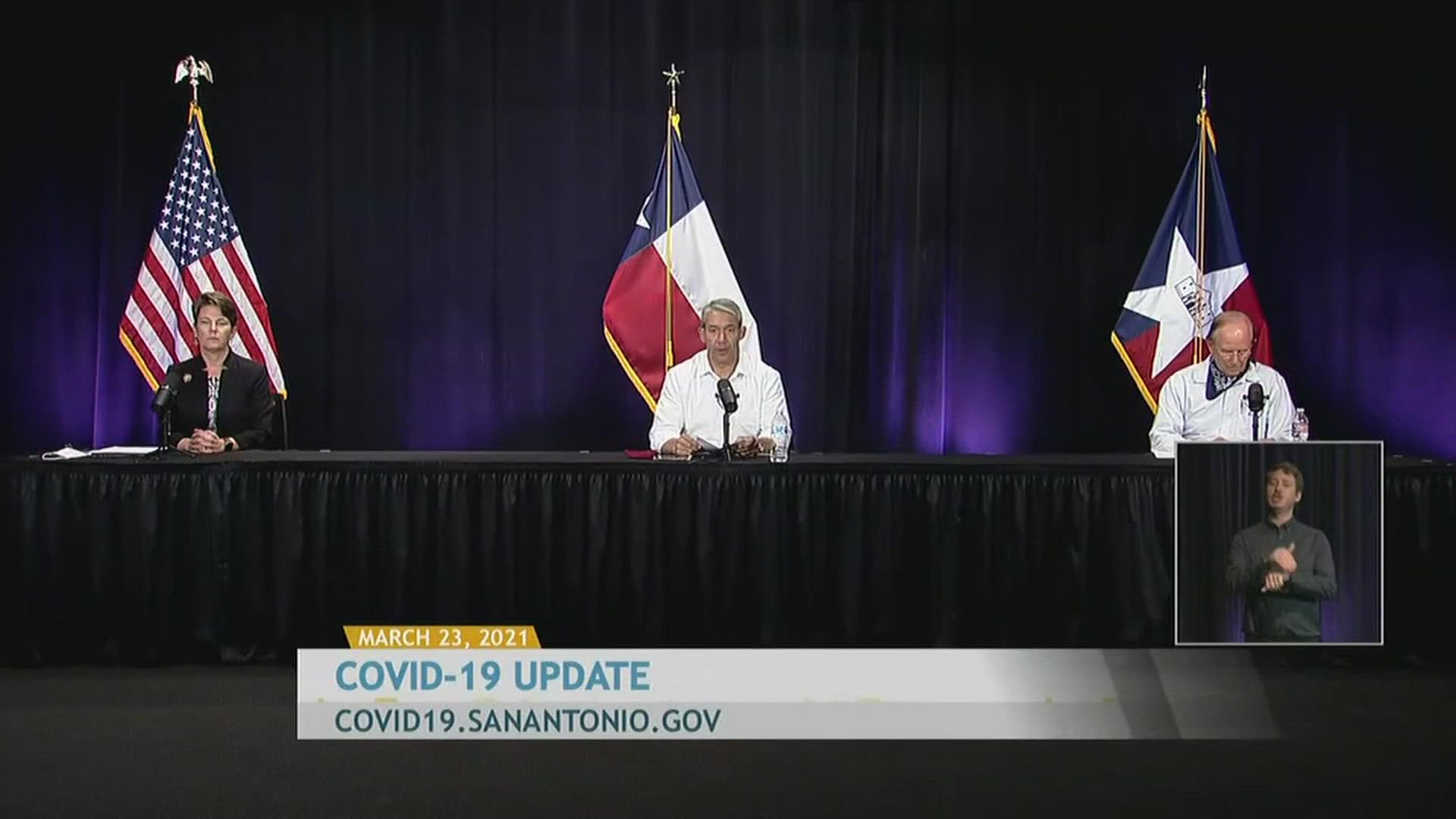SAN ANTONIO — We're tracking the latest numbers from the coronavirus pandemic in San Antonio and across Texas. Here are the latest numbers reported by Bexar and surrounding counties:
- Bexar County: On Tuesday, 133 new cases were reported, bringing the total number of cases to 202,849. Two new deaths were reported, raising the local death toll from virus complications to 3,073.
- Hays County: On Tuesday, officials reported 32 new cases in the county and no additional COVID-related fatalities. There is now a total of 16,945 lab-confirmed local cases, while the death toll remained at 235. Officials estimate 16,339 residents have recovered, while 371 are still ill with the virus.
- Comal County: Officials reported 32 new cases on Tuesday, along with one additional virus-related death. As of Tuesday, 9,577 total COVID-19 cases have been reported, including 5,046 confirmed and 4,510 probable cases, while 305 county residents have died due to COVID-19 complications.
More county case information is available through the Texas Department of Health Services COVID-19 dashboard.
How Bexar County is trending
We've tracked how many coronavirus cases have been confirmed in Bexar County from the time officials began reporting cases in March 2020. The graphic below shows the number of cases since June and charts those daily case numbers along a 7-day moving average to provide a more accurate picture of the overall coronavirus case curve in our area and the direction we're trending amid the pandemic.
On Tuesday, San Antonio Mayor Ron Nirenberg reported an additional 133 coronavirus cases in Bexar County. At least 202,849 county residents have been diagnosed with the virus, and the seven-day rolling case average dropped to 168.
Two new virus-related fatalities were reported raising the local death toll to 3,073.

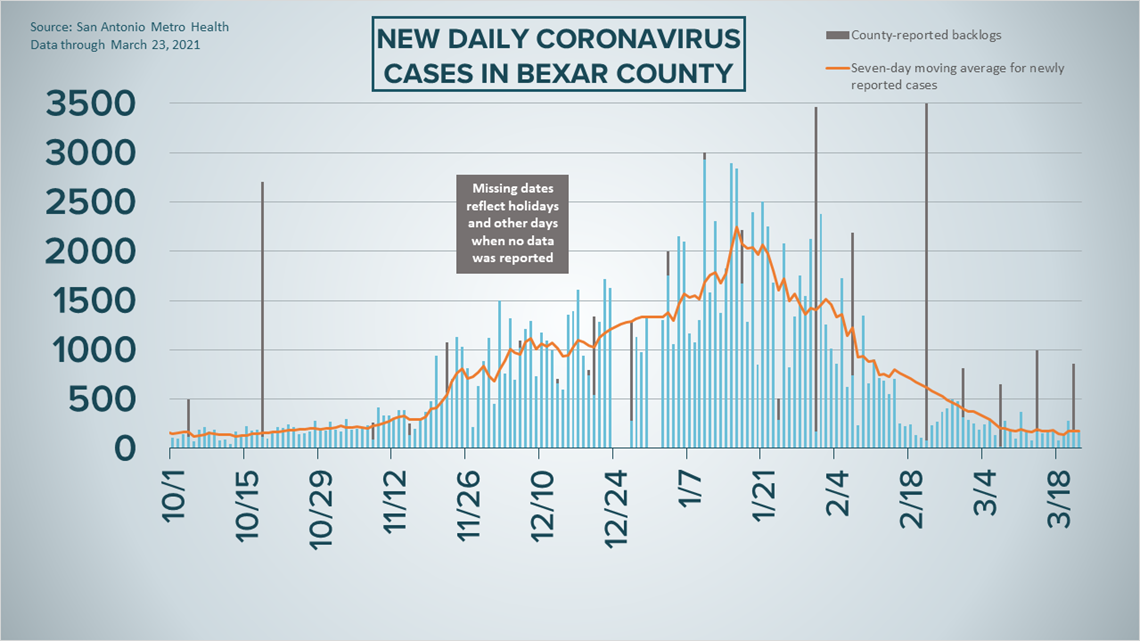
29 patients were admitted into area hospitals in the last 24 hours. Today's hospitalization number (182) is the lowest since June 14, 2020, which was more than nine months ago. The lowest hospitalizations ever reached after the summer 2020 surge was on Oct. 12, when they got down to 184 before starting to climb again.
Of those 182 patients, 40 are on ventilators and 72 are in intensive care.

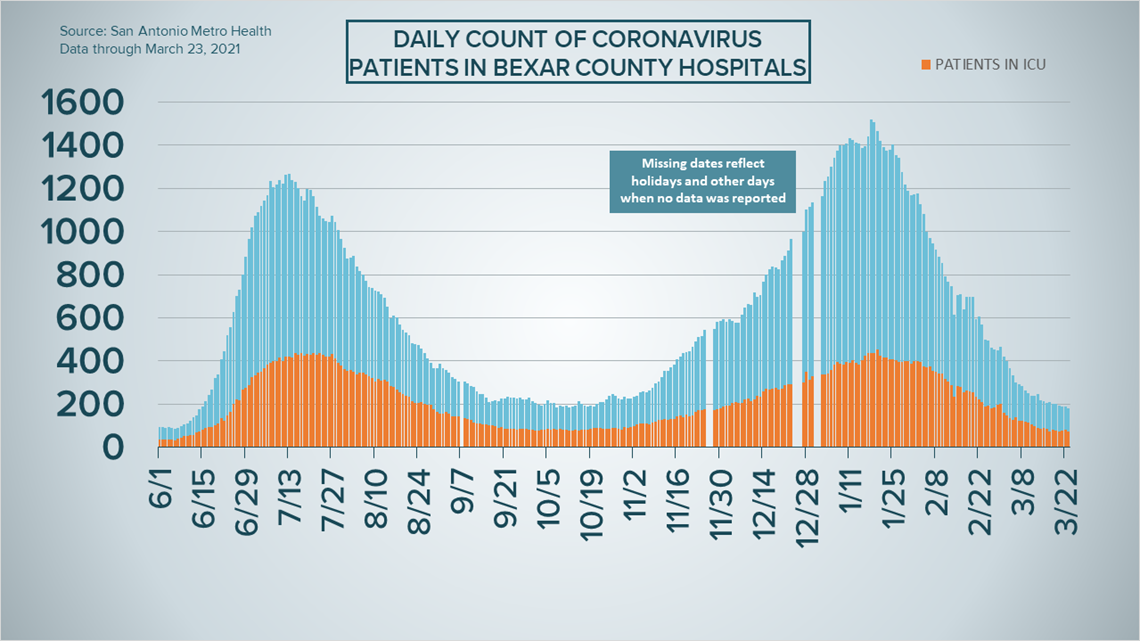
Monday's weekly update of the Warning Signs and Progress Indicators for Bexar County saw Bexar County holding steady at the low-risk level. The positivity rate dropped to 2.3 percent, which is the lowest rate since April 2020, when Metro Health began tracking data.
Coronavirus in Texas
The total number of novel coronavirus cases in the state since the pandemic began grew by 4,595 on Tuesday, according to the Texas Department of State Health Services. That total includes 3,205 new confirmed cases, 1,064 new probable cases, and a backlog of 326 cases. More details can be found on this page.
Tuesday's figures bring the total number of Texans diagnosed with COVID-19 to more than 2.751 million.

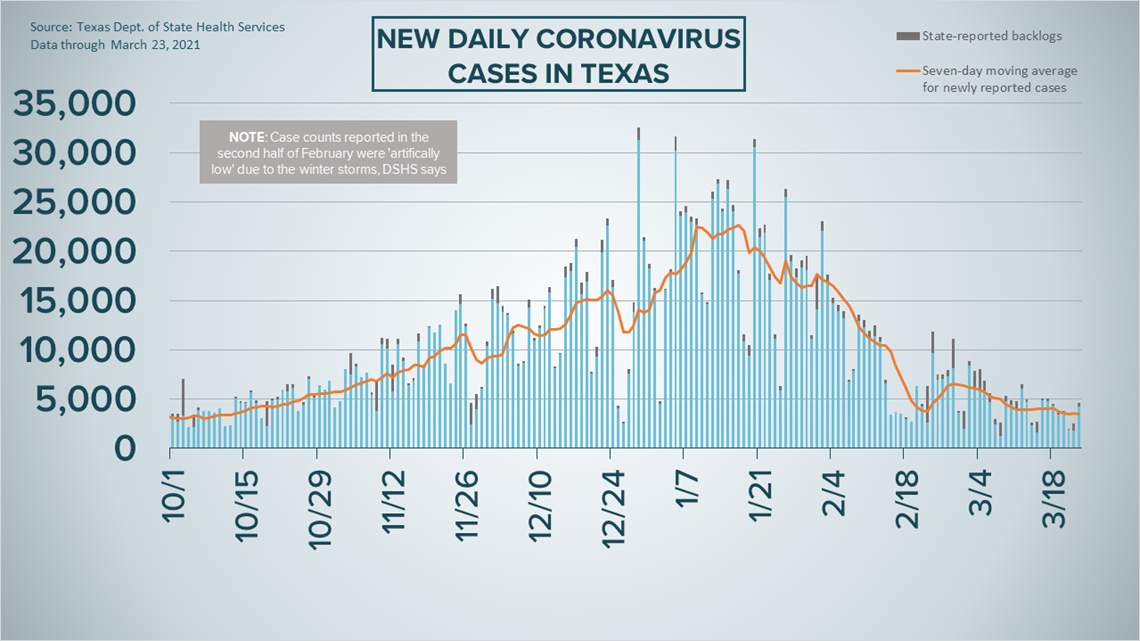
Meanwhile, state health authorities reported an additional 80 deaths from coronavirus complications in Texas. In all 46,558 Texans have died from COVID-19 complications.
Following a nearly two-week decrease in the number of concurrent hospitalizations across the state, the number rose for a second straight day by 51 over the last 24 hours to 3,448 COVID-19 patients receiving treatment for their symptoms across the state, as of Tuesday.
The latest update from the Texas Education Agency showed that there have been at least 194,936 cumulative cases among staff and students on Texas public school campuses through March 14. That number comprises 127,196 positive student cases and 67,740 staff cases. More information can be found here.

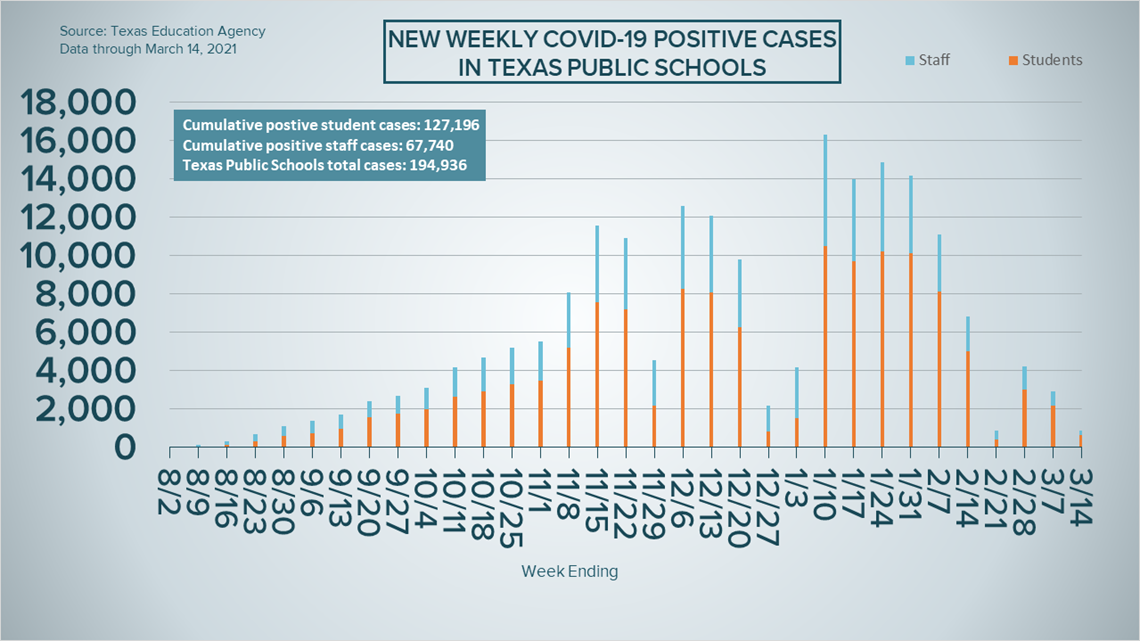
The TEA typically releases new data on school cases on Fridays.
Latest Coronavirus Headlines
- All adults in Texas can get the COVID vaccine starting March 29: What you need to know
- Tinnitus, hearing loss and vertigo could be associated with coronavirus, research shows
- Banksy painting raises $23 million for UK health charities
- Alamodome taking COVID safety precautions as women's NCAA tournament kicks off
- Why some people are going to a different location to get their second COVID vaccine shot
- US: AstraZeneca may have used outdated info in vaccine trial
- Don't wait, book your summer vacation now: Expert weighs in on summer travel surge as vaccinations ramp up
Coronavirus symptoms
The symptoms of coronavirus can be similar to the flu or a bad cold. Symptoms include fever or chills, cough, shortness of breath or difficulty breathing, fatigue, muscle or body aches, headache, new loss of taste or smell sore throat, congestion or runny nose, nausea or vomiting, and diarrhea, according to the Centers for Disease Control.
Most healthy people will have mild symptoms. A study of more than 72,000 patients by the Centers for Disease Control in China showed 80 percent of the cases there were mild.
But infections can cause pneumonia, severe acute respiratory syndrome, kidney failure, and even death, according to the World Health Organization. Older people with underlying health conditions are most at risk.
Experts determined there was consistent evidence these conditions increase a person's risk, regardless of age:
- Chronic kidney disease
- COPD (chronic obstructive pulmonary disease)
- Obesity (BMI of 30 or higher)
- Immunocompromised state (weakened immune system) from solid organ transplant
- Serious heart conditions, such as heart failure, coronary artery disease, or cardiomyopathies
- Sickle cell disease
- Type 2 diabetes
- The CDC believes symptoms may appear anywhere from two to 14 days after being exposed.
Human coronaviruses are usually spread...
- Between people who are in close contact with one another (within about 6 feet).
- Through respiratory droplets produced when an infected person coughs, sneezes or talks. These droplets can land in the mouths or noses of people who are nearby or possibly be inhaled into the lungs.
- Some recent studies have suggested that COVID-19 may be spread by people who are not showing symptoms.
Help stop the spread of coronavirus
- Stay home when you are sick.
- Eat and sleep separately from your family members
- Use different utensils and dishes
- Cover your cough or sneeze with your arm, not your hand.
- If you use a tissue, throw it in the trash.
Find a Testing Location
City officials recommend getting a COVID-19 test if you experience fever or chills, cough, shortness of breath or difficulty breathing, fatigue, muscle or body aches, headache, new loss of taste or smell, sore throat, congestion or runny nose, nausea or vomiting, or diarrhea.
Here's a Testing Sites Locator to help you find the testing location closest to you in San Antonio.

